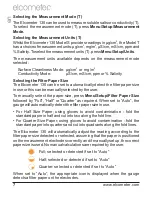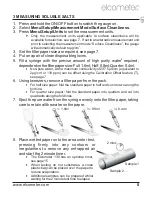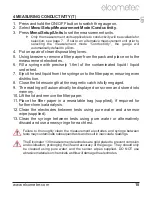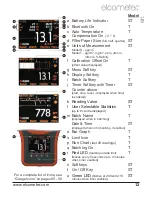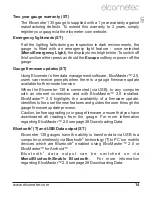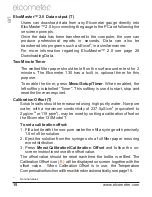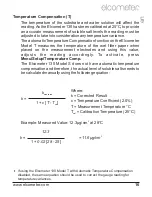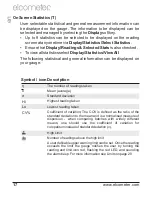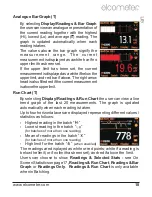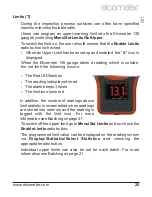
8 BATCHING (T)
The Elcometer 130 Model T has two measurement modes:
Immediate mode
: Where readings are taken, rolling statistics calculated
(and displayed), but individual values are not stored in the memory; and
Batching
: Where readings are stored into memory in batches. Batches
allow the user to collate readings for easier analysis of large structures.
The Elcometer 130 Model T gauge can store a total of 150,000 readings
in up to 2,500 batches and has the following batching functions:
Create a new batch;
Batch/New Batch
Open an existing batch;
Batch/Open Existing Batch
Rename an existing batch;
Batch/Rename Batch
Copy a batch - including limit setups;
Batch/Copy Batch
Clear all the readings within the batch - but leaving all limit setups;
Batch/Edit Batch/Clear Batch
Review the readings, statistics, batch information and a graph of
the readings;
Batch/Review Batch
Delete a Batch or all batches, entirely from the gauge;
Batch/Edit
Batch/Delete Batch
Delete the last reading entirely or delete the reading, but mark the
reading as deleted in the batch memory -
Batch/Deleted
Reading/Delete With Tag
and
Batch/Deleted Reading/Delete
Without Tag
respectively.
Creating a new batch
When using batching for the first time, or when opening a new batch,
press
Batch/New Batch
. The user can now:
Open the batch and take readings;
Batch/New Batch/Open Batch 1
Rename the batch - before opening it via
Batch/New
Batch/Rename Batch 1
. (See Alpha numeric naming Batches on
page 22). A batch can be renamed at any time via
Batch/Edit
Batch/Rename Batch
.
Set up specific batch upper limit via
Batch/New Batch/Batch
Limits
(see Limits on page 20)
Set up a fixed batch size via
Batch/New Batch/Fixed Batch Size
(see Fixed Batch Size on page 25)
www.elcometer.com
21
en
R

